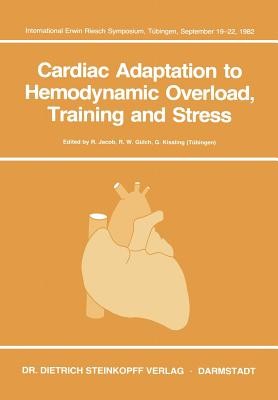
- We will send in 10–14 business days.
- Publisher: Steinkopff
- Year: 2011
- Pages: 373
- ISBN-10: 3642853285
- ISBN-13: 9783642853289
- Format: 17 x 24.4 x 2 cm, softcover
- Language: English
- SAVE -10% with code: EXTRA
Cardiac Adaptation to Hemodynamic Overload, Training and Stress (e-book) (used book) | bookbook.eu
Reviews
Description
Cardiac hypertrophy and accompanying phenomena have received increasing attention in recent years - particularly in the basic sciences. The present volume contains the proceedings of the Erwin RIESCH SYMPOSIUM on CARDIAC ADAPTATION TO HEMODYNAMIC OVERLOAD, TRAINING AND STRESS held in Tiibingen on Sep- tember 19-22, 1982. In addition to the topics of the previous symposia (1976 and 1979) concerned with problems of cardiac hypertrophy, the scope of this sequel meeting has been expanded to include related fields. The intention was to consider numerous related features and problems of chronic reactions of the heart (and vascular system) to abnormal hemodynamic loading, as well as alterations due to maturation, aging, training, neuroendocrine status and stress. Special attention has been paid to cardiac reactions at the level of contractile proteins. The results are considered primarily in light of long-term adaptation of the heart. Of course, research at the forefront of current knowledge need not always lead to congruent conclusions. Neither can the individual contributions always agree with the viewpoint of the editors. However, the broad array of individual approaches employed by biochemists, biolo- gists, pathologists, physiologists, pharmacologists and clinical cardio- logists will certainly help to provide a more balanced interpretation of the results in individual fields, stimulate reexamination of established con- cepts and provide direction for future research.
EXTRA 10 % discount with code: EXTRA
The promotion ends in 20d.08:42:51
The discount code is valid when purchasing from 10 €. Discounts do not stack.
- Publisher: Steinkopff
- Year: 2011
- Pages: 373
- ISBN-10: 3642853285
- ISBN-13: 9783642853289
- Format: 17 x 24.4 x 2 cm, softcover
- Language: English English
Cardiac hypertrophy and accompanying phenomena have received increasing attention in recent years - particularly in the basic sciences. The present volume contains the proceedings of the Erwin RIESCH SYMPOSIUM on CARDIAC ADAPTATION TO HEMODYNAMIC OVERLOAD, TRAINING AND STRESS held in Tiibingen on Sep- tember 19-22, 1982. In addition to the topics of the previous symposia (1976 and 1979) concerned with problems of cardiac hypertrophy, the scope of this sequel meeting has been expanded to include related fields. The intention was to consider numerous related features and problems of chronic reactions of the heart (and vascular system) to abnormal hemodynamic loading, as well as alterations due to maturation, aging, training, neuroendocrine status and stress. Special attention has been paid to cardiac reactions at the level of contractile proteins. The results are considered primarily in light of long-term adaptation of the heart. Of course, research at the forefront of current knowledge need not always lead to congruent conclusions. Neither can the individual contributions always agree with the viewpoint of the editors. However, the broad array of individual approaches employed by biochemists, biolo- gists, pathologists, physiologists, pharmacologists and clinical cardio- logists will certainly help to provide a more balanced interpretation of the results in individual fields, stimulate reexamination of established con- cepts and provide direction for future research.


Reviews